
Age-related changes in the facial skin are associated with a gradual slowing-down of all cellular regeneration processes, as well as with a decrease in hyaluronic acid synthesis in the body and a decrease in collagen and elastin fibers production. Because of all these factors, tissues lose their ability to retain water, which reduces their elasticity. Fine lines appear on the face, and then deeper wrinkles arise around the eyes, on the forehead, between the eyebrows and on the upper lip.
As a result of the decrease in the tone of the tissues, they become saggy. Due to the gravitational force, fascia and skin sag, forming nasolabial folds, a double chin, “bags” under eyes and saggy cheeks. The face loses its well-defined contours and gets a tired and gloomy look.
It is impossible to correct the changes that begin after the age of 30 with any cosmetic means or facelifting machines. But plastic surgeons that use various methods of tissue tightening referred to as “facelifting” are capable of making your face young and attractive again.
The essence of the surgery procedures is to excise excess skin, to remove excess fatty tissue, to strengthen muscles and fascia, and to return the soft tissues of the face to their original position. Modern techniques make it possible to avoid such negative consequences as the shift of the eyelid corners to the temples, unnatural facial expressions, skin tension and stretched corners of the lips.
Facelifts were carried out worldwide in 2019. In Germany there are almost 20,000 facelift operations a year.
SMAS Lift
SMAS lift is a special kind of face lift. Its main difference from the classical operation is that the surgeon works not with the superficial layers of the skin, but with deeper tissues. The term SMAS stands for “superficial muscular aponeurotic system”. This layer is located straight under the skin and fatty tissue and acts as a framework for the soft tissues of the face. When one gets older, it inevitably degrades: the initially elastic fibers weaken and become worn out, the production of collagen and elastin decreases, and the SMAS structures gradually slip down, carrying along the superficial layers of the dermis with them. As a result, deformations characteristic of older and elderly age appear on the face:
- the skin looks flabby; deep, the so-called, structural wrinkles appear on it;
- the sharpness and smoothness of the face contours vanishes;
- the eyebrows begin to sag, forming folds over the upper eyelid;
- there are surpluses of skin under the eyes and malar bags on the cheekbones (SOOF);
- the slipped tissues form pronounced nasolabial folds and rhytides;
- the neck area suffers: folds and wrinkles appear on it, as well as the double chin.
In order to fully solve this complex of problems, it is necessary to move the fibers of the muscular aponeurotic layer to its former position ‒ where they were 10-15 years ago, before they start getting worn out and sagging. If this is not done and when one works only with the skin (as it happens with ordinary surface facelift), firstly, the rejuvenating effect will be minimal, and secondly, there is a high probability of distortion of the mouth lines, the submental area and the shape of the eyes.
At what age should a SMAS lift be performed?
Plastic surgeons rarely focus on patients’ passport data: each person is aging in his or her own way, and even female peers may have completely different aesthetic problems. On average, the period from 35 to 55 years old is considered optimal for spacelifting.
Girls of up to 30 years old do not need a SMAS lift (if there are no exceptional indications) ‒ at this age the framework of the face performs its functions almost flawlessly, the tissues confidently resist gravitational ptosis, and the dermis retains its natural elasticity. As a preventive measure, they should, as a rule, have enough cosmetic facelift and beauty treatments.
But what concerns ladies at the age of over 60, who have very pronounced wrinkles and folds, a solitary SMAS facelift will not bring the desired results. For high-quality rejuvenation, it will be necessary to supplement it with a classic circular facelift, during which all excess loose skin is excised.
Types of surgery: which of them is better for the patient?
Basic Technique
It resembles a circular lift, but is considered much less invasive and less traumatic. Incisions are made above the ear in the scalp. Then the surgeon moves the scalpel along the front edge of the auricle and around the lobe ‒ such a long access is necessary to separate the tissues and expose the SMAS.
Detachment of the skin and the muscular aponeurotic layer is performed in a different volume for each patient. Standardly, the detachment area is limited by the following reference points: the outer part of the eye> the line above the cheekbone> the nasolabial fold. The area around the lower jaw and the neck area are peeled off at the bottom. The exposed layer is fixed with clips, after which the doctor pulls it in the right direction and secures it in a new position with sutures. If necessary, excess skin is excised ‒ but only in a very small volume.
The lower third of the face is also corrected in the same way ‒ here the lift of the supporting layer makes it possible to normalize the neck-chin angle and smooth out the neck. Then cosmetic sutures are placed, which are hidden either in the hair or in natural tissue folds. In conclusion, the patient’s face is bandaged with a tight fixing bandage.
Endoscopic Surgery
It includes the same manipulations with tissues as with the basic SMAS lift technique. The difference is that there is no need to make long incisions: the surgeon uses the finest endoscopic equipment with which you can work through small (up to 1 cm) punctures. The micro video camera transmits the operating field to the monitor, and, focusing on the resulting image, the doctor first separates the muscular aponeurotic layer, and then performs its deep lift along with the adjacent skin flaps.
The result is a complex rejuvenation, almost invisible stitches and a relatively fast recovery period. The main disadvantage of this technique is that it is impossible to excise excess skin, so endoscopic surgery, with all its advantages, will not give the desired effect to patients who have pronounced deep wrinkles.
Non Surgical Technique
Recently, it has become possible to work with deep facial tissues without surgery ‒ by means of special ultrasound equipment. Waves are directed through the surface layers of the dermis and focused on the SMAS structures. Tissues are heated locally, as a result of which the worn out fibers contract, tighten the supportive layer and smooth out all the tissues that are located over them. The process is quite painful, but it is quite possible to do without general anaesthesia, just local anaesthetics.
How is the surgery performed?
A SMAS lift begins with a face-to-face consultation, during which the surgeon examines the patient, detects specific aesthetic problems and suggests one or more ways to solve them. Next, you need to undergo the standard preoperative tests (their list can be expanded) and talk with the anaesthesiologist. In the absence of contraindications, a convenient date for the intervention is appointed. The further outline of the surgical team’s actions is as follows:
- The anaesthesiologist puts the patient to sleep by using general inhalation or intravenous anaesthesia.
- The surgeon forms an access through incisions in the parotid area. In case of an endoscopic SMAS lift, punctures are made in the scalp for insertion of instruments and the camera.
- The muscular aponeurotic layer is separated from the underlying facial structures, and then it is moved in the right direction and is fixed with internal sutures.
- Excess skin and soft tissue should be excised if necessary.
- All incisions are sutured with cosmetic stitches, drainage tubes are placed, and a fixing bandage is applied on the face. The patient is sent to the ward, gently woken up from anaesthesia and kept under constant surveillance.
The operation lasts about 2-3 hours, in the most difficult cases up to 4-5 hours. Then the patient will need to spend another day in hospital under doctors’ supervision, after which, in the absence of complications, you can go home.
The recovery period is minimal ‒ only a few days ‒ but the result will be much less noticeable than in the case of plastic surgery, and it will last only 2-3 years against 10-15 years, which is guaranteed by a classic SMAS lift. According to experts who have mastered both techniques, there is no great sense in comparing them directly: a full surgical intervention in all respects is much more effective than an apparatus procedure. The latter, with a glance at its high cost, can be recommended only to those who have direct contraindications to plastic surgery.
How long does the effect last, can it be enhanced and extended?
The total duration of the result after a SMAS lift is up to 15 years. As a rule, this operation is performed once in a lifetime and does not require to be repeated: even years later, patients who have had a deep lift look much younger than their peers. And then everything will depend on skin care: regular peeling courses, mesotherapy and biorevitalization will make it possible to keep the youth and freshness for a long time.
To get maximum effect, deep lift can be combined with light rejuvenating procedures: chin liposuction, endoscopic forehead lift or blepharoplasty. Besides, surgeons sometimes supplement SMAS lift with liposuction in the cheek area to shape a perfect facial contour, make it more expressive and more sculptural. For the same purpose, implants are sometimes placed in the cheek or chin area. However, the possibility and expediency of carrying out any additional manipulations can be determined only in person: it all depends on their overall complexity and resources of the body.
Contraindications, Possible Complications and Side Effects
Restrictions for such an operation are quite standard:
- Pregnancy and lactation;
- diabetes, oncological diseases;
- dermatological problems, inflammation in the face;
- propensity to form keloid scars;
- the presence of any acute illnesses or exacerbation of chronic diseases;
- blood clotting disorders;
- heart diseases.
The main and relatively harmless side effect of a SMAS lift is oedema and hematomas. You should not be afraid of them ‒ they happen to absolutely all patients and normally in a few days they decrease, and by the end of the first week they stop bothering at all.
How much does a SMAS lift cost? Actual Prices
The cost of the operation will depend mainly on its scope and complexity. Almost always the price-lists of specialists and clinics contain only estimated amounts, and the exact bill can be obtained only after a thorough examination.
Rhitidectomy (Circular Facelifting)
This operation is performed under general anaesthesia and is a complex elimination of deep wrinkles on the face and neck and redistribution of the tissues in these zones, the removal of nasolabial folds, excess fat deposits and the double chin. As a result, signs of aging disappear and the effect of rejuvenation is achieved.
There are three options for circular lifting ‒ superficial, deep plane and combined facelift.
- The simplest and the fastest procedure is superficial rhytidectomy. When superficial or subcutaneous rhytidectomy is performed, the surgeon peels off and tightens the skin, removing excess material.
- Deep plane facelifting (SMAS facelift) is a combination of superficial facelift with the separation and redistribution of the musculofascial and tendinous complex. When this option is used, not only wrinkles and folds are eliminated, but the shape of the face is also corrected. The effect lasts longer than in the case of the previous version, but the risk of complications increases and the rehabilitation period becomes longer.
- Combined rhytidectomy additionally includes the excision of the superficial tissues in the area of the outer margin of the masticatory muscle and the excision of the deep tissues up to the masticatory muscle. This option makes it possible to perform the correction of deep and superficial tissues by tightening them in different directions.
The duration of the operation depends on its variant and can be from 2 to 4-6 hours. During the rehabilitation period the patient should sleep on the back, avoid physical exertion, abrupt bending and lifting weights for three weeks. It is also necessary to avoid thermal procedures, sun exposure and visits to the sauna for three months.
The effect, which can be assessed after 3 months, lasts 5-10 years.
Upper Facelifting
This method is facelifting of the upper parts of the face ‒ eyebrows and forehead area. As a result, folds and wrinkles are smoothed out, and lifting the eyebrows gives the face openness and clarity. This type of facelifting is used mainly in the case of deep interbrow folds and transversal wrinkles, eyebrow ptosis and blepharoptosis, due to which the face gets a gloomy and tired look.
Depending on the technique frontal facelifting can be:
- Open ‒ the incision is made 7 cm above the frontal hairline from one auricle to the other. In the case of a high forehead, the incision is made even higher. Through this access the surgeon redistributes tissues, tightens frontalis muscles and muscles in the area of the superciliary arches that contribute to the formation of folds, models the position of the eyebrows, excises excess skin grafts and subcutaneous tissue. Tissues are redistributed and fixed in the posterior direction. The rehabilitation period is 2-3 weeks.
- Endoscopic, which makes it possible to achieve the goal with 2-3 small (1-1.5 cm) incisions. The damage to the blood vessels and nerve branches is less. The duration of the operation is reduced, and the rehabilitation period is 1 week. The skin of the forehead is peeled off, but not excised, redistributed and fixed in a new position from the inside.
It is recommended to avoid heavy physical exertion and hot water procedures.
The open method is more indicated to people older than 50 years, because the endoscopic method often does not produce the desired results.
Cheek Lifting
The operation is indicated in the case of pronounced signs of aging in the area of the middle parts of the face ‒ bags under the eyes, significant sagging of the cheeks, pronounced nasolabial folds, and so on. This type of facelifting is recommended in conjunction with blepharoplasty. Incisions are made only under the ciliary edge of the lower eyelid. Due to the low trauma, plastic surgery can be performed under local anaesthesia.
As a result of cheek lifting, due to the uplift of soft tissues, it is possible to eliminate not only fine lines, medium-sized wrinkles and sagging of the skin, but also swelling of the face. Such a negative consequence as ectropion or fish eye effect is excluded. In many cases, cheek lift can be used instead of rhytidectomy.
The duration of the manipulation is 1-1.5 hours on average, and after 2 weeks you can lead a normal life, including doing sports. The effect of the operation lasts 6-7 years.
Space Lift or Spatial Facelifting
The technique is a fundamentally new, low-impact tightening in the middle and lower facial areas. The redistribution of tissues is performed in physiological spaces, located under the facial muscles and filled with fatty tissue. In these spaces one end of the muscles is attached to the bone, the other one to the skin and subcutaneous adipose tissue.
Anatomically, they are located in the areas of the cheeks, malar bones and the lower jaw. Operations are performed endoscopically with minimum surgical trauma, due to the manipulation in free spaces and the absence of the need for tissue separation.
Space lift is characterized by a short rehabilitation period (up to three days) and a minimum number of complications, as compared with other operations. It can be combined with blepharoplasty and tightening of the forehead tissues.
S-Lift
S-lift is a modern skin rejuvenation technique, the name of which comes from the English phrase “short scar”. Despite the low invasiveness of the surgical intervention, S-lift includes elements of SMAS-lift designed for a full reconstruction of the facial contour by fixing the musculoaponeurotic system.
This operation is very successful when applied to patients who need a repeated facelifting or to young people.
S-Lift Characteristics
Short scar facelifting is a surgical method of rejuvenation, aimed at tightening the internal structures of the face and the excision of excess skin. The main feature of the operation is the minimum invasiveness and small scars located behind the tragus. Thus, the small scar remains imperceptible to people around. At the same time, S-lift is not only aimed at tightening the upper layer of the skin. The operation affects the deep structures of the face, thereby achieving global rejuvenation and improvement of appearance without the effect of a stretched mask.
The incision is made in the parotid area and can be extended to the temporal area. The technique of short scar lifting makes it possible to succeed in tightening and rejuvenation of the lower third of the face and neck, eliminating nasolabial folds and ptosis in the lower part of the face. The effect lasts for a long time due to reliable firm fixation of deep soft tissues.
Advantages and Disadvantages of the Operation
The main advantages of S-lift are as follows:
- The fundamental limitation of the incision, which makes it possible to hide the fact of the operation.
- Strictly vertical fixation of the sagging facial tissues. In contrast to the traditional facelifting, in which the tissues are fixed up and back, this technique helps avoid the effect of skin tension, and also maintains the length of the achieved result.
- No risk of damage to the facial nerve due to non-standard tissue excision.
- Low invasiveness of the operation. The intervention lasts for a short time period under gentle local anesthesia with the use of mild intravenous sedation.
- SMAS-lift. The facelifting is aimed at tightening and fixing the musculoaponeurotic system, which provides a natural permanent rejuvenation.
- Low incidence of complications.
- Relatively low cost.
- Accelerated rehabilitation. Low blood loss significantly reduces the time for a patient’s rehabilitation after the surgery. Strict limitation of the incision reduces the risk of focal hair loss which often occurs after a standard surgical facelifting.
The disadvantages of short scar facelift are:
- S-lift is not always effective for eliminating deep flabby wrinkles in the lower third of the face and neck. Patients with such a problem are advised to combine the operation with other procedures of apparatus and therapeutic cosmetology.
- After the surgery patients have painful feelings of medium and low intensity during chewing. The pain is localized in the area of the cheekbones, where the fixation subcutaneous sutures are located.
Indications for Surgery
- Mild or moderate ptosis of the lower third of the face and neck.
- Formation of age folds.
- Pronounced deepening of the nasolabial folds.
- Excess lipid tissue in the chin area.
- Drooping contour of soft tissues and skin in the area of the lower jaw.
- Flabby neck.
- Ptosis of cheek tissue, partial deformation of adipose tissue.
- Weakening of the mouth muscles.
Short scar lift is an alternative to the traditional circular facelifting for those who want to correct gravitational age-related changes in the lower part of the face. If the patient has particularly deep flabby folds in the mouth and neck area, it is better to combine S-lift with lipofilling and contouring.
A positive result is achieved in almost all cases, except for patients with pronounced excess flabby skin in the neck area. The most acceptable age for short scar lift is between 38 and 50 years old. To achieve a comprehensive rejuvenation, it is recommended to combine S-lift with forehead lift and circular blepharoplasty.
Contraindications
Absolute contraindications include a number of diseases and some aspects of the patient’s lifestyle. Relative contraindications include aesthetic factors.
The operation is contraindicated in the following cases:
- Insulin dependent diabetes mellitus
- Chronic diseases of internal organs in the acute condition
- Severe skin diseases
- Autoimmune disorders
- Diseases and dysfunctions of the cardiovascular system
- Long-term smoking experience
- Tendency to form keloids
Surgeons do not recommend this surgery to people with excessive accumulation of skin in the lower third of the face and chin area. S-lift is not recommended to people whose age-related changes of the face are concentrated in the temporal and forehead areas either.
How is the operation performed?
- Preparing the patient for surgery, premedication is possible, depending on the anaesthesia chosen.
- Introduction of combined anaesthesia. In the classic version, local anaesthesia and intravenous sedation are used for such an intervention.
- Performing the main incisions (behind the tragus in women and in front of the tragus in men).
- Fixation of soft tissues in a new position and suturing the periosteal tissue of the malar zone with suspending sutures.
- Additional internal suturing.
- Gentle excision of excess skin graft after SMAS-lift, closure with intradermal sutures.
The surgeon removes the hypodermic sutures on the 7-10 day after the surgery.
Rehabilitation Period after S-Lift
Inpatient hospital stay is observed for 1-2 days from the moment of the manipulation. The patient must necessarily wear a compression bandage which should fix the malar and chin areas permanently until the sutures are removed. After that, the doctor can recommend the patient to use the compression bandage at night, if the operation was preceded by liposuction of the cheeks and chin. Bruises and swelling disappear after 5-7 days. Often they do not occur at all. During the rehabilitation period, liquid and pureed food is recommended because of painful sensations during chewing. After a week, the discomfort, as a rule, disappears.
To speed up the healing process, some surgeons recommend referring to physiotherapy and manual procedures. A special lymphatic drainage massage, micro currents, ozone therapy, magnetic therapy, and caring procedures with the use of healing masks give excellent effect.
Preservation of the Result and Possible Complications
The risk of complications associated with S-lift is minimal. Most often it is caused by the improper implementation of the doctor’s recommendations, as well as the choice of an unqualified specialist. In these cases, there may be blood loss and prolonged healing (in the case of the patient using anticoagulants, antibiotics and active smoking), infection in the area of the skin graft resection, persistent hematomas and edematous phenomena due to the neglect of wearing a compression bandage.
The effect of the operation is preserved for a long time and is comparable with the results of a comprehensive SMAS-lift. Thus, a noticeable rejuvenation of the skin is achieved, and the result is preserved for 10 years or more. The technique can be repeated if there are indications for this, after consultation with the plastic surgeon.
Combining with Other Methods of Aesthetic Medicine
Most successfully short scar lifting is combined with the following operations and procedures:
- Fractional facial rejuvenation
- Circular blepharoplasty
- Contour plastic
- Endoscopic forehead lift
- Platysmoplasty
- Submental liposuction
MACS-Lift
The days when plastic surgeons performed facelifting operations only on the skin are gone. The main layer on which plastic surgery gives the best lifting effect is the muscular aponeurotic surface layer (SMAS or superficial muscular aponeurotic system). But even these operations are traumatic, have many complications and are accompanied by a long period of rehabilitation.
MACS-lift is one of the latest developments of Colombian and American cosmetologists, which has a low level of trauma and gives an excellent result.
What is MACS-lift and what are the anatomical features of the method?
The MACS-lift technique was developed more than 10 years ago in Colombia by plastic surgeon Patrick Tonnard. Later doctors in the United States and Europe began using it. This method of rejuvenation quickly gained adherents among plastic surgeons due to the patients’ natural appearance and the lack of influence on facial expressions. Currently, more and more German doctors are using this type of rejuvenation, paying tribute to its benefits.
MACS lift is an abbreviation of “minimal access cranial suspension lift”, which literally means “facelifting through minimal access”. The method itself occupies a middle or compromise position between the traditional facelifting and the SMAC-lift, which is performed only in the area of aponeurosis. With MACS-lift, the surgeon excises excess skin, and also tightens the deep structures of the face.
What is the difference between a traditional facelifting and MACS-lift?
- The incision which is made during the operation goes from the hairline above the ear, then along the front surface at the level of the tragus, and ends at the earlobe. When the traditional method of facelifting is used, the incision continues behind the ear, which is much more traumatic for the patient.
- After the incision, the surgeon usually tightens the skin layer by peeling it. The area of the peeling is minimized and covers only part of the cheek. Due to the reduction in the volume of the lift, there are much less postoperative complications and side effects.
- The muscle aponeurotic surface layer (SMAS) is tightened in a vertical way and fixed with special purse-string sutures to the temporal tissue. This manipulation smoothes out the nasolabial folds and corrects the chin line.
- The aponeurosis is not peeled off during this operation, therefore in the postoperative period there is no such terrible complication as the disorder of facial nerve conduction. The number of edemas and haemorrhages in the surgical area is also reduced.
- Tightening of the cheek area can be performed simultaneously with the lift or blepharoplasty of the lower and upper eyelids, the forehead and eyebrow areas.
Advantages of the Method
Undoubtedly, MACS-lift has a number of indisputable advantages. Here they are:
- The method is safe and as effective as possible.
- With a minimum incision, maximum results are achieved when the middle and lower parts of the face sag.
- This method corrects the angle between the neck and the lower jaw.
- By applying vertical sutures, the nasolabial fold can be smoothed out.
- The method gives an excellent result in tightening the cheek area and supports the lower eyelid.
- The rehabilitation period has fewer complications and is much shorter in time.
- Facial features after this operation look natural, natural facial expressions remain.
- The suturing method visually lifts the eyes to the cheekbones and makes the look open.
Indications for MACS-Lift
The optimal age when it is possible to perform MACS-lift is 35-55, when some age-related changes appear. So, the indications for the surgery are as follows:
- Change in the contour and facial features.
- Soft tissue ptosis in the lower and middle zones of the face.
- Reduced turgor and elasticity of the skin in the face and neck.
- Drooping mouth corners and deep nasolabial folds.
If the patient has pronounced age-related changes, MACS-lift is combined with other types of face and neck lifting.
Contraindications
This type of intervention is not recommended if the patient has one of the contraindications, which include:
- Changes in the blood coagulation process.
- Individual predisposition to the appearance of keloid scars.
- Diseases of the heart and blood vessels.
- Pregnancy and breastfeeding period.
At least 2 weeks before the surgery, patients are advised to stop smoking or reduce the number of cigarettes smoked by 50%. Besides, 10-12 days before the operation they should stop taking blood-thinning medications (dietary supplements ‒ ginkgo biloba, aspirin drugs).
Performing the Operation
MACS-lift has a number of peculiarities, and the operation itself is performed under general or local anaesthesia. The stages of the operation are as follows:
- Making an incision near the tragus of the auricle.
- Skin separation and aponeurosis tightening.
- The application of vertical purse string sutures on the muscular framework.
- Excision of excess skin areas.
- Suturing the skin in the place of the incision with cosmetic sutures.
Rehabilitation Period
Within a few days, there may be edemas and bruises on the face, which will disappear in 1-2 weeks. The sutures are removed on the 7-10 days after the surgery, which depends on the rate of tissue healing in each patient individually. The patient is not recommended to go to the sauna, bath, sunbathe and engage in intense exercise for two weeks. After that, the person can return to work and lead a normal life.
Early results of the facelifting can be seen already during the 1-2 weeks, but the effect continues to increase up to 2 months.
Possible Complications
Due to the low level of injury, the number of complications with this type of facelifting is minimal. Despite the fact that no plastic surgery can stop time, the effect of MACS-lift can last 3-5 years.
What other methods of rejuvenation and operational methods can be combined with this operation?
MACS-lift is combined perfectly well with other anti-aging procedures, as long as there are indications and significant age-related changes:
- Endoscopic facelifting of the upper third of the face, including the area of the forehead, eyebrows and upper eyelids
- Chin liposuction
- Neck plasty
It should be noted that the popularity of the MACS-lift technique increases every year, as it is notable for a high level of effectiveness, a low level of trauma and a short postoperative period with a minimum number of complications.
Alternative Facelift Techniques
Thread Facelift
Classic facelift is a very serious operation, the essential attributes of which are deep surgical intervention and a long recovery period.
Facelift with threads (thread lift) is a much more “gentle” procedure, which involves placing special biocompatible threads under the skin, which help remove and fix tissues in a new position.
In contrast to the surgical facelift, the thread lift is less traumatic: it does not involve making large incisions, does not require peeling off the skin and is characterized by a fast recovery period.
Indications for Thread Facelift
As a rule, the procedure is indicated to patients at the age of 30-40 years old. However, it can be performed even at an earlier age, when the first signs of aging appear. Thanks to this type of facelift, you can get rid of wrinkles and folds, as well as return the sagging skin into its place.
There are several varieties of thread lift, which are often confused with each other. Meanwhile, the principle of their action is considerably different.
Gold Thread Lift
This procedure is often referred to as “gold thread reinforcement.” It is performed on an outpatient basis and takes no more than an hour. In fact, this type of lift is closer to the injection techniques of rejuvenation, rather than to the classical facelift.
By means of a special instrument, the thinnest threads (no more than 0.1 mm in diameter) made of pure gold are inserted under the skin. Having detected a “foreign” body, our body triggers a specific defense reaction ‒ it increases the production of collagen and elastin, as well as the blood supply to the tissues around the implanted threads.
Due to this, the skin is enriched with essential nutrients that give it elasticity, which, in turn, provides the necessary lifting effect.
The result of thread reinforcement is fully manifested in 3-4 months and lasts for 5-10 years (depending on the patient’s age and the individual characteristics of his or her body).
Aptos Thread Facelift
Facelift with the use of Aptos threads is already a real facelift which involves the transfer of tissues to a new position.
As part of this procedure, biocompatible threads made of polypropylene are placed in the soft tissues of the face through small (2-3 mm) incisions. Along the entire length of the Aptos threads, there are microscopic notches (a kind of hooks). They help to shift the skin and then fix it in the desired position.
Depending on the tasks set before the surgeon, one of the two types of threads can be used ‒ Aptos Thread or Aptos Needle. The latter are smooth threads, and they make it possible to work with more difficult tissues, but their use requires the application of more visible (up to 1 cm) incisions.
Aptos thread facelift is performed under local anaesthesia and takes about 1-1.5 hours. The initial result can be assessed immediately upon completion of the procedure, and the final result can be seen 2-3 weeks after it, during which it will be necessary to refrain from active facial and masticatory movements, as well as to minimize any mechanical action on facial tissues.
The effect of facelift with Aptos threads is maintained for 2-3 years. To consolidate the results, it is recommended to supplement the thread lift with chemical peeling and contour plasty ‒ however, before that it is necessary to make a pause of 2-2.5 months.
Facelift with Silhouette Lift Threads
The facelift technique with the use of Silhouette Lift threads appeared in Russia not so long ago ‒ in 2010 ‒ and it has already managed to gain considerable popularity among both surgeons and their patients.
At its core, this technique is close to the facelift with Aptos threads. Silhouette Lift threads are also made of polypropylene, and instead of “hooks”, special microcones perform the role of fixators. Some time after the lift, these cones dissolve and are replaced by connective tissue, which provides a much more reliable fixation.
The procedure is performed under general or local anaesthesia and takes no more than 45 minutes. Silhouette Lift threads are inserted through a small (1-1.5 cm) incision in the scalp and fixed in the subcutaneous layer.
The effect of such a lift is maintained for 4-6 years, while to extend it, it is not necessary to introduce new implants ‒ it will be enough to tighten the threads inserted during the first procedure.
3D Mesothreads
The innovative facelift technique with polylactic acid threads makes it possible to provide not only a lifting effect, but also to get all the benefits of mesotherapy. The procedure is simple to perform, does not require long-term rehabilitation and is notable for a relatively low cost.
Bioplasty
The newest technique of facial rejuvenation without surgery, known as bioplasty, is by far the most effective alternative to facelift.
The essence of bioplasty is the injection introduction (subdermal) of a liquid solution which, gradually consolidating, forms threads under the skin layer, creating a so-called “framework of elasticity”, which in turn gives the effect of complete rejuvenation of the face for a long (up to 3-4 years) period. The solution is injected along the lines of the face, where there is the greatest sagging (ptosis) of the skin.
Indications for Bioplasty
Bioplasty is recommended at the age of 30-40 years old, that is, at the age when the first signs of aging have already affected the face, but it is still early to think about a full-fledged surgical lift. The procedure helps you cope with the sagging of soft tissues, remove the “flews” and the double chin, as well as form a new, “taut” face contour. In addition, using bioplasty, you can add volume in the cheek area and eliminate wrinkles of any depth and nasolabial folds.
How is Bioplasty Performed?
The bioplasty procedure is performed on an outpatient basis. For anaesthesia, an anaesthetic cream is applied to the face.
The suture material in the liquid state is introduced through an ultrathin needle (no more than half a millimetre) by using a special technique. The main task set before the doctor is to form a kind of framework from it, which will help to lift the soft tissues of the face and fix them in a new position.
Bioplasty of the entire face lasts approximately one and a half hours, and it takes no more than twenty minutes to work with its separate areas.
The drug used for bioplasty ‒ Ellanse ‒ makes it possible to get the first visually noticeable result a day after the procedure. And the full effect can be assessed two or three weeks after it. Its duration will depend on the selected type of Ellanse and can be from 1 to 3-4 years.
At the same time, the rehabilitation period, which is typical of contour correction, is practically absent ‒ it will only be necessary to limit the mechanical action on the treated area. No changes to your schedule (including refusal to play sports, visits to the solarium or sauna) will be required.
Advantages of bioplasty:
- The threads of elastic type, which are formed in the subdermal facial layer from the injected drug, are absolutely biodegradable (in other words, after several years, they are completely dissolved and removed from the human body.
- The total duration of the effect obtained from bioplasty is 3-4 years.
- There is practically no rehabilitation period.
- The bioplasty procedure is practically painless and does not leave marks on the face.




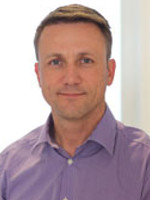
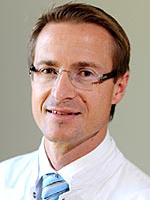



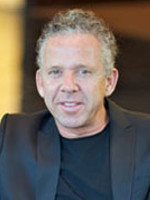
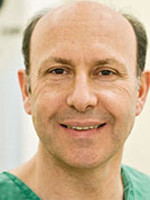
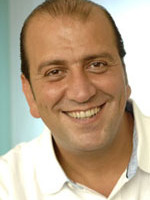

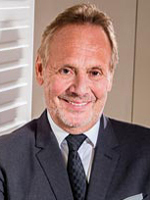

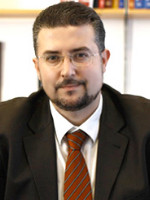
.jpg)
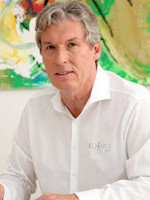
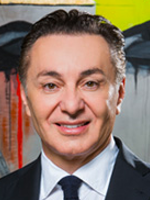



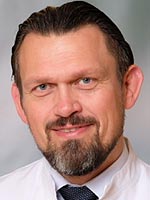


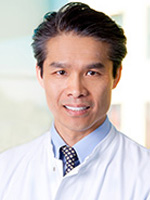



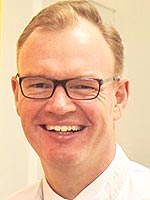




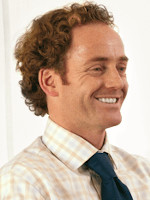



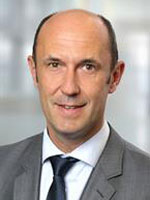


 Loading ...
Loading ...


